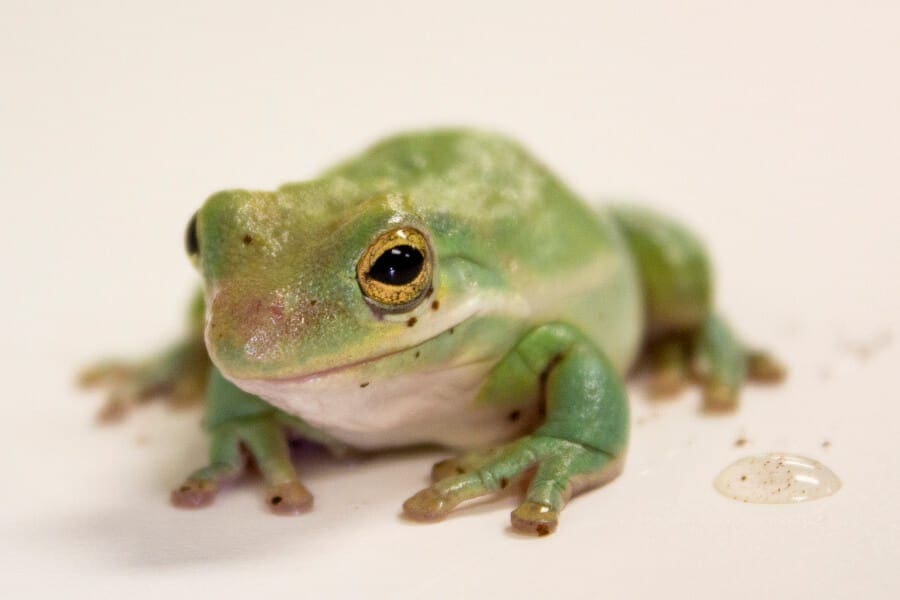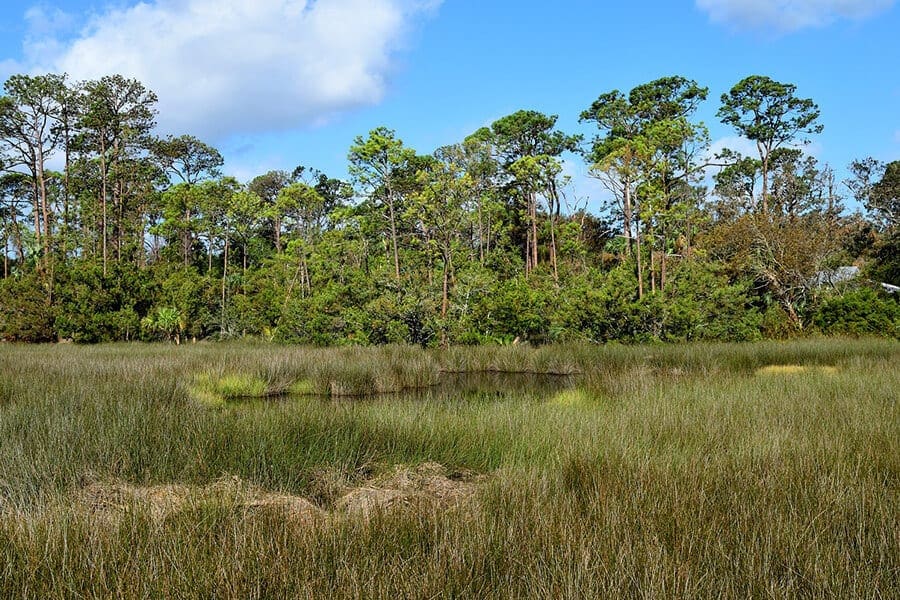

One of our resident American green tree frogs.
Frogs and toads have fascinated us humans since we first appeared. They’ve made their way into our cultures through legends, fairy tales and, more recently, as celebrities (Kermit, anyone?). Scientists are even implementing their secretions into modern medicine; researchers have discovered frog-produced compounds that may be able to treat diabetes, cancer and other conditions.
More than 6,400 species can be found across six of the world’s continents (Antarctica is a little too cold for them) and Florida is the native home to 27 varieties. Many prefer to live in aquatic areas, but some make their homes on land, in burrows and even in trees!
Scientists view amphibians as indicator species, meaning a change in the population of a geographical area may show habitat degradation. They are an integral part of the food web—tadpoles feed on algae, keeping waterways clean, while adults eat large quantities of insects, including those that may transmit fatal illnesses such as malaria to humans. Frogs and toads are important food items for predators, too.

Wetlands are prime habitat for amphibians.
It may seem we have an abundance of these long-leapers, but nearly one-third of the world’s amphibian species are threatened with extinction. Historically, amphibians naturally go extinct at a rate of about one species every 500 years, but we may have lost as many as 200 species since 1980! Pollution, disease, habitat loss, invasive species, climate change and over-harvesting for the pet and food industries all plague frogs and toads throughout the world.
FrogWatch USA, an initiative of the Association of Zoos and Aquariums, recruits members of the public to monitor local amphibian populations. The Zoo joined the FrogWatch team in 2011 and each year we train “citizen scientists” to listen for the calls of different species and share their findings. These reports help biologists develop strategic conservation plans for native animals and ecosystems. In the past seven years, our FrogWatch participants have identified 22 species throughout Brevard County!
You can make a difference for these alluring amphibians right here in Florida (or wherever you live). By joining your regional FrogWatch group or doing your part to preserve local wetlands, you can help ensure there are plenty of frogs and toads leaping across lily pads for years to come!
